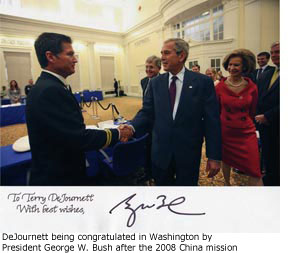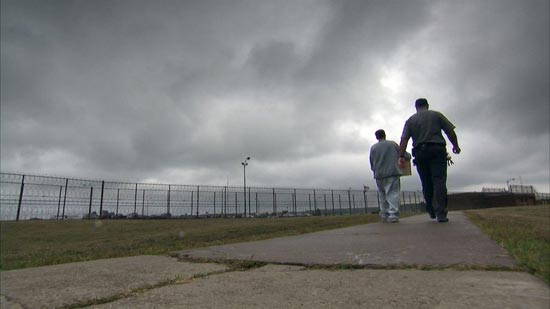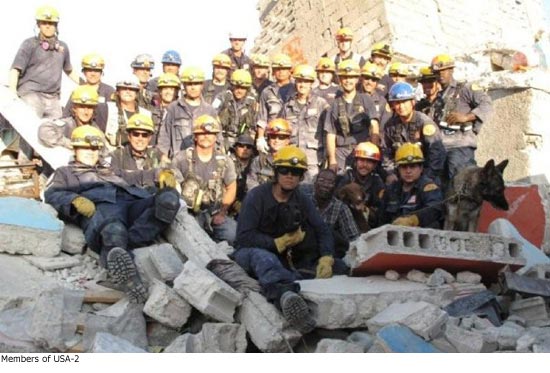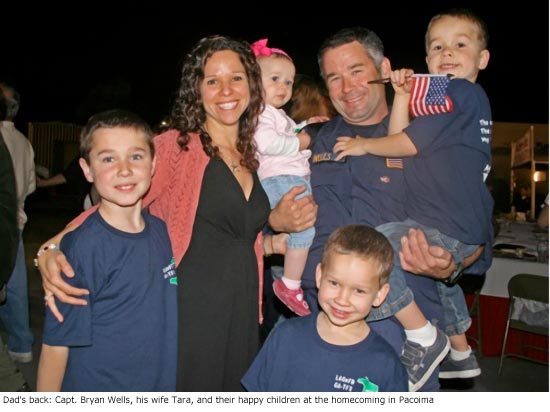County says it’s a prisoner of new parolee plan
February 2, 2010
L.A. County officials Tuesday criticized ongoing plans in Sacramento to trim the state prisons’ population and costs by shifting the care of thousands of former inmates to the county.
Department of Mental Health Director Marvin J. Southard ticked off a series of costly and potentially disruptive effects on county mental health care during the Board of Supervisors weekly meeting. In the earliest stages of the shift, Southard said, the county could end up shouldering anywhere between $8 million to $24 million.
Southard described three groups of inmates and parolees for whom the county could assume responsibility for their mental health care. They are:
- An estimated 1,200 parolees, already residing in L.A. County, whose state-based mental health treatment is about to disappear, throwing them on the county services.
- An unknown number of mentally ill inmates still in state prison who may be released in upcoming months as the state struggles to meet court orders to cut overcrowding in the 168,000 inmate system. This group is particularly worrisome to county officials because it’s expected to be large and coming directly from prison with their needs unclear. For now, a court has stayed their release.
- State mental hospital patients confined because they were judged insane or unfit to stand trial. So far, in the last year, only a small number have been sent to county hospitals as part of a release program. Some of those individuals, Southard said, have been taken to county hospitals in “midnight drop-offs,” an unacceptable practice that he said has been rectified.
The 1,200 new patients will add about 3 percent to the county’s mental health outpatient caseload, Southard said in an interview following the supervisors’ meeting. “It’s an additional 1,200 people added to an already rising patient population when resources are declining,” Southard said.
Supervisor Michael D. Antonovich, who led the questioning of Southard, called it “bizarre” and “irresponsible” that the state would force the county to provide mental health care for these individuals in difficult economic times without providing funding.
The shift of the parolees to county services is the byproduct of a plan that went into effect in late January to reduce the state’s prison population. Reclassifying more than 7,000 individuals to “Non-Revocable Parole” allows the state to reduce parolee supervision and shift care from Parole Outpatient Clinics, funded by the state, to county facilities.
The plan brought strong reactions from county officials.
County CEO William T Fujioka, for one, said the additional burden on the county amounted to an “unfunded mandate”—an all-too-common practice of the state requiring programs for which it will not pay.
State officials argue that the parolees they will reclassify—as well as prisoners scheduled for release—are non-violent offenders who pose little risk to the community. Matthew Cate, secretary of the California Department of Corrections and Rehabilitations, has said that the state could save as much as $500 million a year by lowering probation costs and providing earlier releases for some inmates.
Complicating the financial issues is a federal court order requiring California to dramatically reduce the prison population. The order arises from a federal lawsuit showing that inadequacies of the prison health care system violated inmates’ constitutional rights in the over-crowded institutions.
State prison officials promise to assist the county with the paperwork and referrals. But Southard said after the meeting that, despite good intentions, getting help is tough when “the state is in a shambles” because of retirements, furloughs and cutbacks. “They’re trying their best, but just scheduling meetings with people at the state who know the situation is difficult.”
New County Counsel Andrea Sheridan Ordin told supervisors that “the lack of coordination I think is one of the most disturbing portions of this at the moment.” She promised to look at “all types of [legal] remedies” to increase coordination and communication with the state.
All aboard Expo to the Westside
February 2, 2010
 This Thursday marks a turning point in the decades-long effort to bring mass rapid transit to the Westside of Los Angeles. That’s when I, along with my colleagues on the Exposition Metro Line Construction Authority Board, will cast a crucial vote on extending the Expo Line from Culver City to Santa Monica.
This Thursday marks a turning point in the decades-long effort to bring mass rapid transit to the Westside of Los Angeles. That’s when I, along with my colleagues on the Exposition Metro Line Construction Authority Board, will cast a crucial vote on extending the Expo Line from Culver City to Santa Monica.
I intend to vote yes, and here’s why.
The Westside has waited for decades to become part of the growing regional mass transit system of Los Angeles County. While transit lines have been built in downtown, Pasadena, Long Beach, the San Fernando Valley and along the Century Freeway, the Westside’s public transit system is exclusively made up of street buses. The Expo Line will give commuters who work and live in the western part of L.A. County an alternative to sitting in their cars for up to 3 to 4 hours each day getting to and from work or school. For the first time since the legendary Red Car system was dismantled after World War II, the Westside will have mass rapid transit.
And Thursday’s vote is a key step to getting us there.
The Expo Board will consider the Final Environmental Impact Report (FEIR) for Phase 2 of the project, the section of the light rail that will run from Culver City to Santa Monica. We must approve the FEIR before we can award a design and construction contract for this long-awaited project. If approved, Phase 2 could begin some construction before the end of this year, with completion planned in 2015. The line’s ridership is estimated to be 64,000 a day by 2030.
The Expo Line in its entirety will connect downtown Los Angeles with Exposition Park/USC, Crenshaw, Culver City, Pico/Sepulveda, West Los Angeles and Santa Monica. The first phase, which runs between downtown and Culver City, is now under construction and working toward an opening next year.
The Expo Line has had its share of critics, with concerns raised about matters ranging from grade crossings, impact on neighborhoods and placement of the project’s maintenance yard to delays and noise during Phase 1 construction.
But I firmly believe that the FEIR has addressed these issues in great detail and that we can deliver a project that will reflect what our region wants and needs. Extensive analysis has been done to ensure that the Expo Line is built in a manner that is as respectful as possible of the communities through which it will run. New elevated grade separations have been recommended where appropriate. Those intersections include: Venice Boulevard, Bundy, Centinela, Pico-Gateway, Cloverfield/Olympic and Sawtelle. The remainder of the grade crossings will be at street level.
It’s significant to note that the overwhelming majority of the 9,000 comments received on the environmental impact report have been positive. State Senator Fran Pavley and Assembly members Mike Feuer and Julia Brownley also have voiced their support for the project. And the cities of Los Angeles, Culver City and Santa Monica have partnered with Expo to build it.
The $1.5 billion Expo Line is being funded largely through the Measure R half-cent sales tax that was approved by county voters in 2008. The project, coupled with the extension of the subway westward, also partially funded through Measure R, will bring much-needed mass rapid transit to the Westside.
All of us have waited a long time for this moment. Building the Expo Line and extending the subway to the Westside are among the reasons I helped write Measure R and fought so hard to get it passed. An effective rapid transit system will improve our quality of life. System users will save time and money while reducing wear and tear on body and soul.
Come and join us at the Hall of Administration at 2 p.m. Thursday, and let’s get this train moving.
Posted 4-19-10
Click here to read more blog entries.
Westside Subway 101
January 29, 2010
 It takes a while to plan a subway. So for those who want a cheat sheet to catch up with everything that’s happened so far in the plan to create a westward extension of the Purple Line, check out this list of frequently-asked questions just posted on the Metro site.
It takes a while to plan a subway. So for those who want a cheat sheet to catch up with everything that’s happened so far in the plan to create a westward extension of the Purple Line, check out this list of frequently-asked questions just posted on the Metro site.
If you want a more up-close-and-personal tutorial, consider attending a brown bag lunchtime open house in Century City on Tuesday, Feb. 2, from 11:30 a.m. to 2 p.m. You will need to bring your own potato chips, but the transit talk and video presentation are free.
LA’s Haiti rescuers
January 29, 2010
Images of Haiti from returning heroes
The LA County Fire search and rescue team that was hailed for its heroics in Haiti is on its way home. For a look at some of what they encountered and accomplished, click through this gallery of photos the team sent home and posted on Facebook. The team is expected to arrive in L.A. later this afternoon.
—————————————————————————————————————————————–
After Haiti, a red-carpet family reunion
Dad was in Haiti on a rescue mission, but the Pinewood Derby waits for no man. So 8-year-old Caden Wells finished building his little wooden car with relatives, christened it “USA” in honor of his father’s faraway search-and-rescue squad and raced it to a personal best third-place finish.
For the Wells family, life went on after Los Angeles County fire captain Bryan Wells shipped out for a 16-day tour of duty in earthquake-ravaged Haiti.
But life was not the same.
For the families of the 72-member Los Angeles County Fire Urban Search and Rescue team that returned home to a hero’s welcome Thursday, the time away was measured in hope, prayer, worry, nightly conference calls—and kids counting the days till they could start hanging out with their dads again.
—————————————————————————————————————————————–
READ RELATED HAITI NEWS
After Haiti, a red-carpet family reunion
January 29, 2010
Dad was in Haiti on a rescue mission, but the Pinewood Derby waits for no man. So 8-year-old Caden Wells finished building his little wooden car with relatives, christened it “USA” in honor of his father’s faraway search-and-rescue squad and raced it to a personal best third-place finish.
For the Wells family, life went on after Los Angeles County fire captain Bryan Wells shipped out for a 16-day tour of duty in earthquake-ravaged Haiti.
But life was not the same.
For the families of the 72-member Los Angeles County Fire Urban Search and Rescue team that returned home to a hero’s welcome Thursday, the time away was measured in hope, prayer, worry, nightly conference calls—and kids counting the days till they could start hanging out with their dads again.
Caden, along with his mom, Tara, and the rest of the family—Brady, 6, Nathan, 4, and baby Ellie—was in the crowd of 300 that greeted the returning squad at the department’s Technical Operations center in Pacoima Thursday evening.
“I missed him a lot,” Caden said simply as he waited. Nathan was more exuberant as he thought of what he’d been missing.
“Tickle Daddy!” he yelled. He said he was looking forward to wrestling with his father again, too. “We both win,” he said, then hollered gleefully “My dad is a hero!”
The kid knows what he’s talking about on that point.
Wells, a 13-year county fire department veteran, led one of the two fire rescue teams in Haiti. Dispatched to by the U.S. government, the task force made 9 dramatic rescues and garnered international attention for the county team during their mission.
Tara Wells is used to her husband’s dangerous deployments. He has fought wildfires in Northern California for weeks at a time, and traveled with the county search and rescue team to Louisiana after Hurricane Katrina. But for her, Haiti was different.
“This particular deployment was by far the one that gave the most anxiety problems,” Tara said. The uncertainty of aftershocks, the unstable crowd situation, all made her uneasy. “The first couple days were really rough.”
But she gained courage from prayer and a church retreat the first weekend of the mission. The daily updates for family members from Haiti via conference call, something new that the department implemented during this trip, bolstered her spirits as well.
She designed special T-shirts for her kids to wear to the homecoming. The words on the shirts, beside a green map of Haiti, said it all: “The earth shook. The people called. My daddy went. My dad’s a hero.”
Word got around, and before you knew it, everybody wanted one. She ended up handing out 75 to the crowd–navy for the boys, pink for little girls.
Finally, the search and rescue team arrived, after a long traveling day in which they drove from Port-au-Prince to the Dominican Republic, then flew to Orlando and on to LAX, where buses awaited to transport them to Pacoima.
When Wells popped off the bus, his boys climbed all over him, and he took little Ellie in his arms for a kiss.
Then Wells, 40, spoke a little of what they’d seen and done. He was the team manager for the 30-person “Blue Squad,” one of the two rescue teams that the L.A. contingent formed. The worst moment came when his team had to extract a corpse in view of a trapped woman who was already injured and screaming. “It was upsetting to her to see that,” Wells recalls. But the team pulled her out alive, as a throng of Haitians shouted “USA, USA, USA!”
Supervisors Mark Ridley-Thomas, Michael D. Antonovich and Zev Yaroslavsky attended the homecoming. “This is the most versatile fire department in the world,” Yaroslavsky said proudly.
Tara Wells spoke, too. “Our hearts were with you as we watched, and we could not stop watching,” she told the team.
And she thanked the department for supporting the families with aid, advice and a steady flow of news from Haiti. “Words cannot describe our gratitude,” she said, “for taking care of us while they were gone.”
READ RELATED HAITI NEWS
Images of Haiti from returning heroes
January 28, 2010
The LA County Fire search and rescue team that was hailed for its heroics in Haiti is on its way home. For a look at some of what they encountered and accomplished, click through this gallery of photos the team sent home and posted on Facebook. The team is expected to arrive in L.A. later this afternoon.
—————————————————————————————————————————————–
READ RELATED HAITI NEWS
Supervisors to consider creating a countywide recovery zone
January 25, 2010
 The Los Angeles County Board of Supervisors will be asked on Tuesday, Jan. 26, to designate the entire county as an economically-distressed “recovery zone,” paving the way for it to issue hundreds of millions of dollars’ worth of bonds to fund an array of projects under the American Recovery and Reinvestment Act (ARRA.)
The Los Angeles County Board of Supervisors will be asked on Tuesday, Jan. 26, to designate the entire county as an economically-distressed “recovery zone,” paving the way for it to issue hundreds of millions of dollars’ worth of bonds to fund an array of projects under the American Recovery and Reinvestment Act (ARRA.)
The county is seeking to take advantage of a massive U.S. Treasury Department program that has allocated $25 billion to help state and local governments across the nation get projects moving in areas that have been hit hard by job losses. Los Angeles County’s allocation is nearly $181 million in economic development bonds and $271.5 million facility bonds, which can be made available to private entities for projects in the recovery zone.
To support the case for a countywide recovery zone designation, county analysts pored over economic data and found that more than 83% of Los Angeles County census tracts have “directly experienced significant levels of poverty, unemployment, home foreclosures, or general distress,” according to a letter to supervisors from the Chief Executive Office.
Since the rest of the county falls within an average worker’s 31-minute commuting range, that means all areas of the county have a “reciprocal impact” on each other and should be included in the designation, the letter said. The countywide designation would also give supervisors more flexibility in coming up with a final list of projects to be funded with the bonds.
The only project specifically mentioned in the board letter is the Martin Luther King Jr. Multi-Service Ambulatory Care Center. The CEO’s office said it has identified more than $1.1 billion in project proposals that meet the basic bond criteria—far more than the county’s bond allocation could cover. It currently is working with each supervisor’s office to develop a priority list of projects to be funded. The final list must be compiled by Aug. 15, 2010, and the bonds issued by Dec. 31, 2010.
The recovery zone economic development bonds come with a federal subsidy covering 45% of the interest. There is no federal subsidy with the facility bonds, which are tax-exempt and can be issued by the county and the funds loaned to private borrowers developing projects within the recovery zone.
The county also is authorized to issue $27,312,584 in Qualified Energy Conservation Bonds for energy-reducing or renewable energy projects in public governmental projects, with an additional $11,705,393 allocated to bonds for such projects in the private sector.
[Updated 1/26/10]: The supervisors, at their weekly meeting, approved the “recovery zone” designation. The CEO’s office will prepare quarterly briefings for the board on the project’s progress.
Press conference on storm update 1/22/10
January 25, 2010

Faced with the prospect of serious cuts to social services in the California budget, the L.A. County Department of Public Social Services has produced two videos showing the crucial role of one endangered program—In-Home Supportive Services, which helps seniors and others with disabling conditions avoid institutionalization.
Leading the charge from Malibu to Port au Prince
January 22, 2010
Battalion Chief Terry DeJournett commands the largest fire battalion in the Los Angeles County Fire Department, with 12 fire stations that cover the Santa Monica Mountains.
So what’s he doing in Haiti?
DeJournett, 55, is running the 72-person L.A. County urban search and rescue team that was rushed to Haiti last week in the wake of an earthquake that has left the nation in ruins. Already, the team has saved nine victims from the rubble, including three women buried under a collapsed Port-au-Prince apartment building and another who was pulled from the remains of a bank.
“The thing you get with Terry is defined leadership,” says Battalion Chief Thomas Ewald, who is directing from Pacoima the support of the Haiti mission. Ewald says DeJournett thrives as a tactical commander in the field.
The task force’s work has drawn international acclaim and attention, including a CNN interview (see below) Wednesday during which DeJournett praised the Haitian’s resiliency. “The fact that we are still making rescues,” he said, “shows the strength of the people here.”
Cathy DeJournett, his wife of 34 years, has taken comfort hearing her husband’s voice a few times during conference calls arranged by the department each night. “He’s enjoying being able to help people there so much,” she said. The family has two grown children.
The stress of having a firefighter spouse who travels to danger spots, Cathy said, “is something you get used to.” She said she draws confidence from the fact that “I know they are doing everything they can to take precautions.”
 A 24-year County fire veteran, DeJournett joined the elite squad in 1991 and rotates the front-line leadership with a half dozen colleagues. He has traveled throughout the world. Less than two years ago, for example, he led a small rescue contingent to China following the Sichuan earthquake. On his return, he flew to Washington to receive congratulations from then-President George W. Bush. He also frequently travels abroad representing L.A. County and the U.S. in training missions in Asia, Europe, Africa and Australia.
A 24-year County fire veteran, DeJournett joined the elite squad in 1991 and rotates the front-line leadership with a half dozen colleagues. He has traveled throughout the world. Less than two years ago, for example, he led a small rescue contingent to China following the Sichuan earthquake. On his return, he flew to Washington to receive congratulations from then-President George W. Bush. He also frequently travels abroad representing L.A. County and the U.S. in training missions in Asia, Europe, Africa and Australia.
Closer to home, DeJournett , who performed rescue work during the 1994 Northridge earthquake and the 1995 Oklahoma City bombing, leads firefighting teams in the hills above L.A. He directed the assault on a portion of the Station Fire last summer, as well as during the Malibu fire in 2007. Since 2006, he’s been the Battalion 5 chief, overseeing stations stretching from Westlake Village and Malibu to Topanga and Calabasas.
“He runs a tight ship,” said his boss, Assistant Chief Gary Burden. “When he is on the scene, he gets a lot of respect because of his experience.”
How long DeJournett’s team will stay in Haiti remains unclear.
—————————————————————————————————————————————–




























 Check for the latest closure information
Check for the latest closure information








